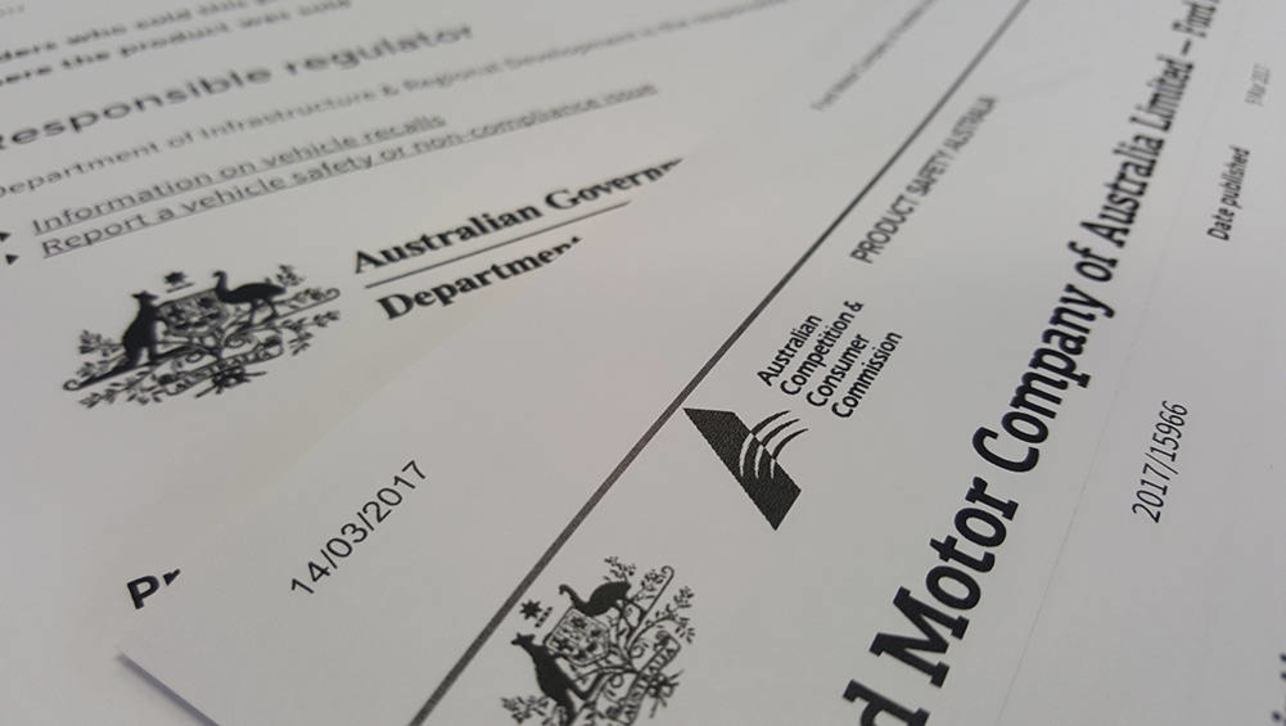The Australian Competition and Consumer Commission (ACCC) has issued 14 separate notices in the space of two weeks for the recall of a wide range of vehicles reaching back to models built in 2003.
Volkswagen Group’s notice is the most wide-ranging, effecting some model year 2008 and 2009 Skoda Octavias, as well as Volkswagen Golf, Jetta, Eos, Scirocco and Caddy models built between model year 2009 and 2010.
In all cases, the anti-lock braking system (ABS) control module has the potential to overheat which can lead to a failure with a corresponding dashboard warning light and loss of anti-lock braking function.
A number of MY16 and MY17 Golfs are also being called in to replace incorrect tyre information placards that display specifications for a different tyre and wheel size. If followed, the incorrect inflation information could effect vehicle handling and safety – particularly when carrying heavier loads.
Audi is also asking some customers to book in for inspections to identify a number of A4, A6, A7 and A8 models that may have been fitted with faulty airbag modules.
According to the German car-maker, certain inflator modules and seatbelt pretensioners have been filled with the incorrect ignition agent mixture, which could prevent operation during a crash. The fault is not related to the Takata airbag module problem, which can cause the component to explode.
Jaguar is reporting the same fault with select examples of its MY17 and MY18 F-Type sportscars and XE sedans build during model year 2017.
An airbag problem with some Toyota Corollas dating back to 2003 is also not related to the global Takata problem but concerns some models built between March 5, 2003 and October 20, 2005.
The Japanese car-maker says its problem is also related to propellant composition, which is susceptible to volume reduction when exposed to prolonged high temperatures and can cause the inflator casing to rupture when triggered.
A separate recall relating to certain Nissan N16 Pulsars and Y61 Patrol vehicles is another instalment of the ever-growing Takata airbag module crisis, which is the result of a manufacturing error that allows moisture into the propellant, rendering it unstable.
A number of fatalities have been caused overseas by the resulting shrapnel caused by the rupturing inflators, but no Australians have been harmed to date.
Mercedes-Benz is calling for owners of some E-Class sedans and wagons to book in for investigation into incorrectly wired windscreen wiper electrics, which could, under certain circumstances, become damaged.
A failed wiper motor would cause a hazard for occupants in wet conditions, with some examples of the large luxury sedan built between April 1, 2016 and August 31, 2016 effected.
A problem effecting Subaru’s MY17 Impreza has the potential to cause the reversing camera image to freeze when reverse gear is selected, which could lead drivers to believe it was safe to proceed when a hazard was, in fact present behind the vehicle.
Hyundai’s LF Sonata is the focus of a recall that has identified an incorrectly-installed sunroof wind deflector which can work loose under day-to-day conditions. If loose, the component could shatter the glass sunroof panel or present a hazard to other road users.
BMW’s i3 range-extender (Rex) is also effected by an incorrectly installed part. Vehicles built between July 2, 2014 and December 28, 2016 may have a fuel tank breather pipe that can wear through, releasing flammable petrol vapour to the atmosphere.
The potential of a fire risk is also the subject for a Ford Mustang recall, which is being called back to Blue Oval service centres to inspect for insufficient clearance between battery cabling and the exhaust manifold of V8 GT variants.
Examples of Ford’s popular sportscar built between May 27, 2015 and March 1, 2016 may contain the problem which can allow the manifold and bare wire to contact, causing a fire hazard, but Ford says no incidents had been reported in Australia.
Camshafts manufactured using a “non compliance” material can cause certain versions of Fiat’s Ducato van to stop suddenly, says the Italian commercial vehicle producer. If the camshaft cracks, it is also likely to cause extensive engine damage.
Vans powered by the 2.3-litre Multijet diesel engine built between December 19, 2016 and January 10, 2017 may contain the faulty camshafts.
In all cases, customers will be contacted by the respective manufacturers to arrange inspection and remedial work where necessary, or owners can contact the companies directly or find out more information via the ACCC recalls website.




-2.jpg)


.jpg)

.jpg)
.jpg)



.jpg)

.jpg)
.jpg)



.jpg)


.jpg)




.jpg)
.jpg)
.jpg)
Comments